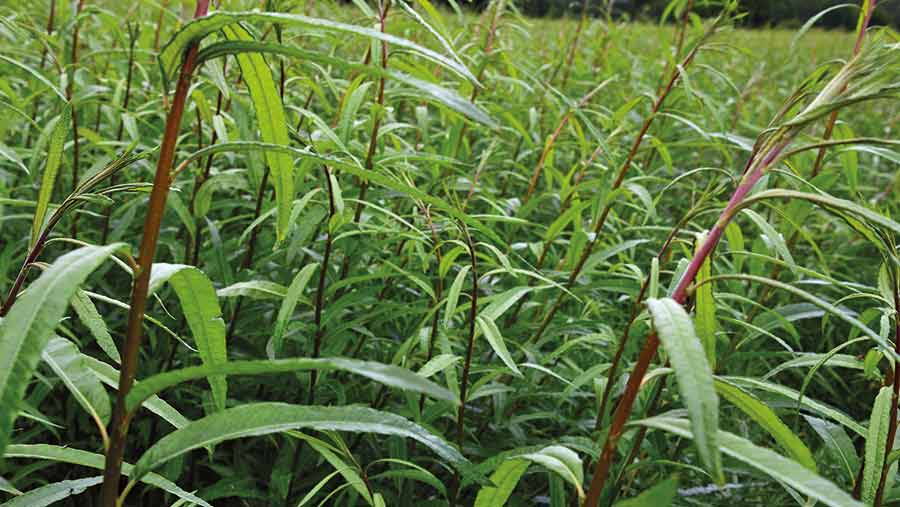Energy crop opportunity for northern growers

Farmers in northern England and south Scotland are being sought to grow short rotation coppice (SRC) willow on long-term contracts for a Cumbria-based paperboard mill.
Swedish firm Iggesund PaperBoard wants more home-grown coppice to fuel its 50MW combined heat and power biomass plant, built two years ago at its Workington mill.
Iggesund wants to secure a minimum of 50,000t a year of SRC willow, which is about 10% of its total annual requirement. This will come directly from growers within a two- to three-hour drive of the plant. Some 23,000t of SRC has been supplied to date.
See also: Willow diversification secures beef farm’s future
Under the contract, farmers are responsible for paying for willow canes, weed control, nutrition and pest control (deer and rabbits in particular) while Iggesund uses local contractors to carry out planting, harvesting and haulage. Seed-beds need to be similar to maize and are generally prepared by the farmers to keep establishment costs down.
SRC benefits
- Alternative income source on marginal land
- Shelter and wind break for livestock
- Good game cover
- Increases farm biodiversity
- Suited to wet climates
- Qualifies for single payment as a permanent crop.
The firm’s alternative fuels manager Neil Watkins says the one-off cost of buying canes and planting is typically around £1,150/ha. There are no longer any planting grants available for this crop, but Iggesund offers a loan towards upfront costs, repaid through deductions from crop income. It also pays the harvesting and haulage costs.
“SRC has got to be grown professionally, so it’s vital to establish the crop well and look after it. If you do, the returns can be great. Weed control, nutrition and pest control are important areas to keep an eye on in the first year or two.”
Soil testing for pH, nitrogen, phosphate and potash is recommended after every harvest, with most growers applying some fertiliser. Industry data suggests 60kg N/ha is typically enough, although Mr Watkins says some sites may need less given the nutrient value of leaf litter.
SRC has a productive life of around 22 years, with a commercial harvest every three years, giving seven harvests over the course of the 22-year RPI-linked contracts, he says.
SRC’s shallow roots (most typically in the top 30cm), makes it easy to return land to grass or cropping, he says.
Iggesund designs each contract with its growers individually taking into account many factors including site size, location and infrastructure (for example, access roads and loading points).
Mr Watkins says each farmer can expect to earn up about £445-£500/ha a year (£180-£200/acre a year). From a yield of about 20-25t/ha a year.
An Environmental Impact Survey is required on every site, which can take two months.
Contract overview
- 22-year, index-linked price
- Break clause with three-year notice period
- Commercial harvest every three years
- Returns based on delivered freshweight yield
- Land should be pH 5.6-7.5 and cultivated to 20cm (8”)
- Must have access for planting, harvesting and loading (similar to silage operations)
- 25-50-acre+ sites ideal, others considered
